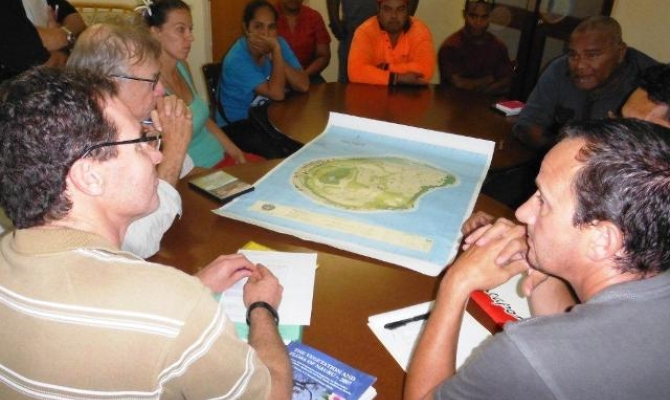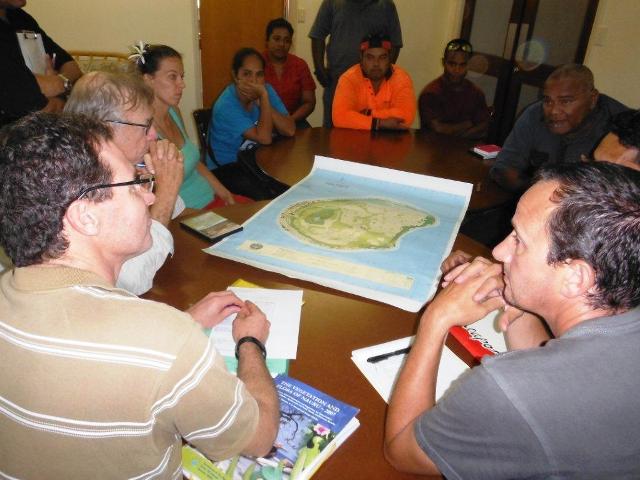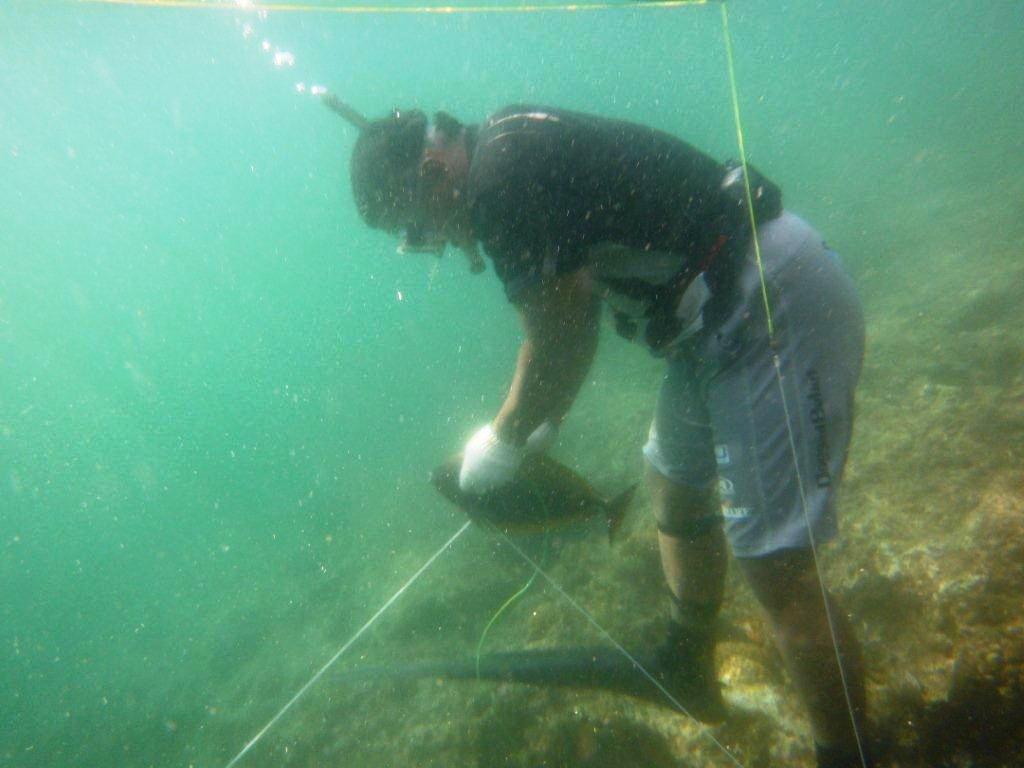
Nauru's species and environment surveyed by world experts
One of the smallest countries in the world, Nauru, has had its marine and land species surveyed by a team of 12 international experts.
Having a land area of just under 22 square kilometres, Nauru is renowned for the phosphate that has seen two-thirds of the land being mined. This large scale industrial disruption has caused significant loss of land species and may have contributed to the introduction of many exotic species.
The team of experts arrived on the island on 17 June for 10 days of intensive survey work. The team was assembled and coordinated by the Secretariat of the Pacific Regional Environment Programme (SPREP) in collaboration with the Government of Nauru and Conservation International.

“SPREP is pleased to be able to put together these scientists all of them are well recognised in their field of expertise, to assist with surveying of marine and terrestrial fauna and flora of Nauru,” said Bruce Jeffries of SPREP and the team coordinator.
“What the scientists have been doing is a rapid survey or assessment of as many species found in Nauru. This is what we call a biodiversity rapid assessment or BIORAP,” Jeffries added.
“The Nauru Government is pleased to work with SPREP on this survey, which will include staff from Department of Commerce, Industries and Environment, Nauru Fisheries Authority and the Nauru Rehabilitation Corporation. They will assist and learn from these experts on some of the survey techniques,” said Asterio Appi, Nauru Project Coordinator.
The scientists from the United States, Hawaii, Samoa, New Zealand and Australia are looking at birds, lizards, insects, plants, corals and fishes, as well as the general state of the environment.

“The coral reefs of Nauru are one of the healthiest in the world, with very high live coral cover that is comparable or much higher that Australia’s Great Barrier Reef,” said Dr Sheila McKenna the coral reef health expert.
The team found one skink that has not been recorded from the island which could be a new introduction or a new species that has not yet been described. Backlin is hoping that further genetic research will provide the answer on the skink’s status.
“Our surveys confirm six skink species for Nauru and an exotic snake that may have recently been introduced through soil or pot-plants,” said Dr Adam Backlin, the reptile expert.
The endemic and charismatic Nauru reed warbler is being surveyed with other birds to ensure that the numbers are in a healthy condition.
“There are also concerns on the declining population of noddies, as they are being targeted for food. So an important part of my work is to assess the state of the birds and suggest some options for their recovery,” explained Rebecca Stirnemann, the bird expert.
“Locals were telling us that they used to harvest on average 100 birds a night, but now they are lucky if they catch five. It shows that the harvesting is causing the numbers of noddies to decline. Everyone needs to do something now to stop the loss of Nauru noddies,” added Stirnemann.
The preliminary findings from the survey will be presented to the community prior to the team’s departure from Nauru and a detailed report will be given to the Nauru Government once the findings are analysed.
For further information, please contact Bruce Jefferies ([email protected]) or Asterio Appi [email protected]